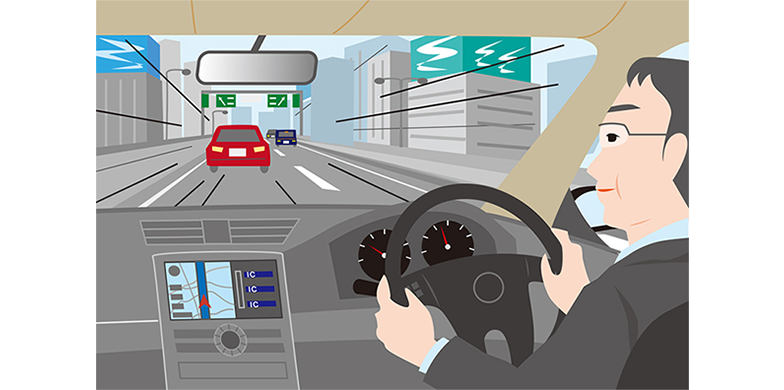The Media Innovation Research Department at DENTSU SOKEN INC. is a think tank whose mission is to explore changes in media and information communication environments, as well as audience trends.
The theme of the fifth installment is "The Car Interior as a Multi-Media Space."
From October to November 2015, the "44th Tokyo Motor Show 2015" and "SMART MOBILITY CITY 2015" were held. At the booths of various companies, alongside concept cars, numerous technology exhibits were on display, including driver assistance, autonomous driving, and Connected Car (which could be literally translated as "connected car"). This time, we would like to focus on the concept of the "Connected Car."
Connected Cars are expected to provide various benefits by equipping vehicles with advanced sensing technology and connecting them to networks.
The primary focus is on enhancing safety. For instance, systems utilizing dedicated ITS (Intelligent Transport Systems) radio frequencies are being introduced. These systems communicate traffic-related signals between road and vehicle (road-to-vehicle) and between vehicles (vehicle-to-vehicle), delivering driving assistance information to the driver. Industry-wide efforts to reduce traffic accidents have intensified. Within this, we can also glimpse aspects of technological development aimed at the next step: autonomous driving.
On the other hand, taking a broader view of the Connected Car concept reveals another direction: using information and communications to provide occupants with necessary information and enhance the comfort of the vehicle interior.
Some manufacturers have already begun selling models with standard LTE or other high-speed mobile connectivity, initiating efforts to enhance in-vehicle internet access. Beyond this, signs point to the emergence of a new car life, offering previously unseen entertainment within the vehicle environment.
Observing these developments, one senses the stirrings of significant change in the environment surrounding the automotive market.
So, what kind of media environment surrounds Japanese people inside their cars today? To find out, DENTSU SOKEN INC. Media Innovation Research Department conducted an original survey in September 2015 targeting 4,400 men and women nationwide who regularly drive cars.
We present the trends in the current in-car media environment revealed by this survey, focusing on the use of internet-based services.
① A large number of users are now enjoying music via streaming services
In recent years, the ways people listen to music have diversified, and the car interior is no exception. Our survey confirmed that users listening to music via streaming services now account for 10.2% of the total. This usage rate has already surpassed 10%, which is remarkable considering these services are relatively new.
To use music streaming services, users can connect their smartphone to the car audio system wirelessly via Bluetooth or an FM transmitter (a device that converts the signal to any FM frequency band for reception by the radio tuner), or connect them via a wired method like a cable. Additionally, many users were found to stream promotional videos of their favorite artists on video-sharing services to listen to the audio.
② Displaying Smartphone Screens on Car Navigation Systems
We found that more users are utilizing smartphone navigation apps. However, there is also significant user feedback stating that using these apps is difficult in a car due to screen size limitations (46.5% of respondents answered "Strongly agree" or "Somewhat agree" to the question "Do you find smartphone navigation difficult to use because the screen is too small?"). Consequently, a new usage pattern has emerged where users project their smartphone screen onto the car navigation display to enjoy navigation services on a larger screen.
③ Outdoor Advertising That Drives Behavioral Change
When broadly considering the media environment inside a car, the presence of outdoor advertising cannot be overlooked. Anyone who has driven a car has likely experienced moments like being drawn to an advertisement that caught their eye during an irritating traffic jam. Surveys reveal that many people, prompted by seeing an outdoor ad, then search online via their smartphone for information about the product while stopped or after exiting the vehicle ("The percentage of respondents who answered 'strongly agree' or 'somewhat agree' to 'I have looked up a product after seeing an outdoor advertisement' totaled 18.3% of the overall sample").
Thus, as the era of the Connected Car approaches in earnest, the car interior is transforming into a "complex media space" where information from broadcasting, communications, and physical media converges.
Looking ahead, the proliferation of automotive information service standards like "Android Auto" and "CarPlay," along with the anticipated launch of automotive radio broadcasting (multimedia broadcasting using the V-Low band) scheduled to begin in March 2016, is expected.
The evolution of the car as a media space for the future will attract increasing attention.




